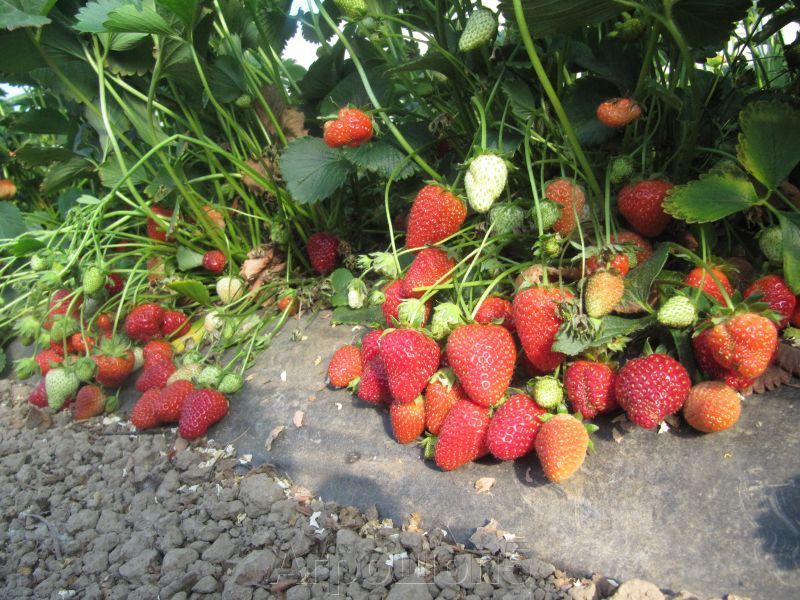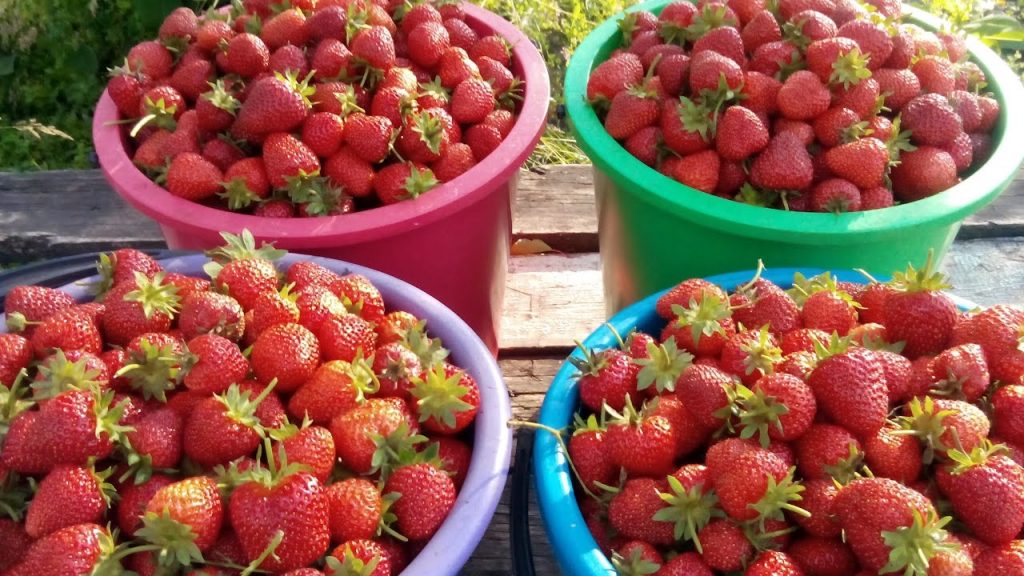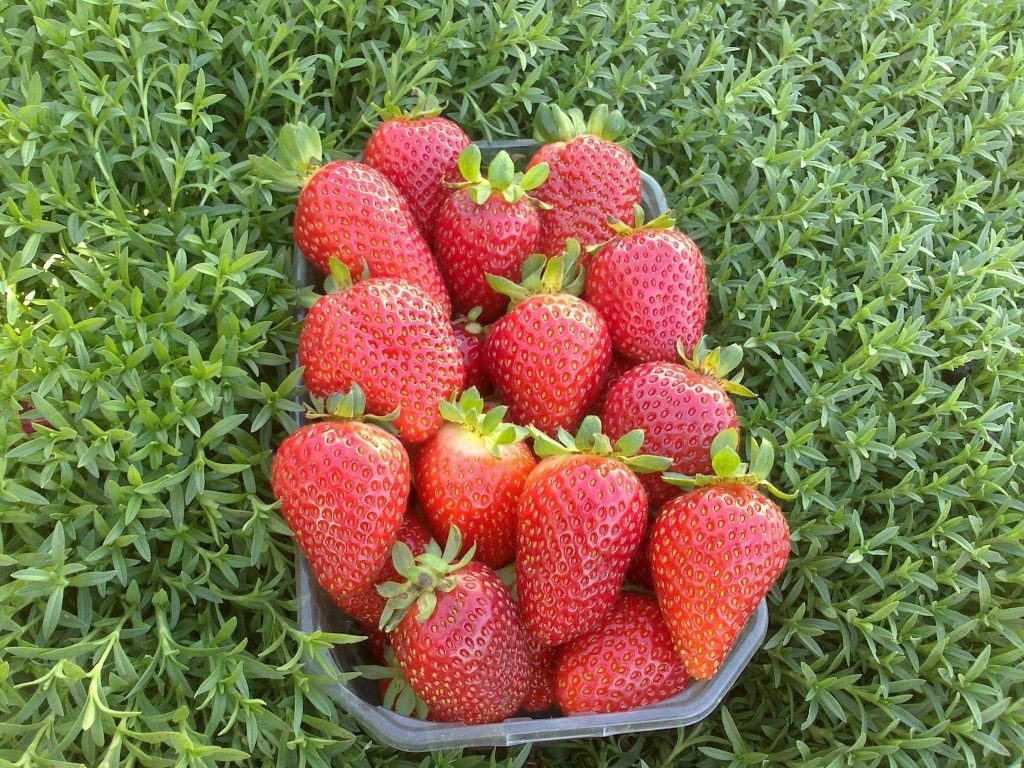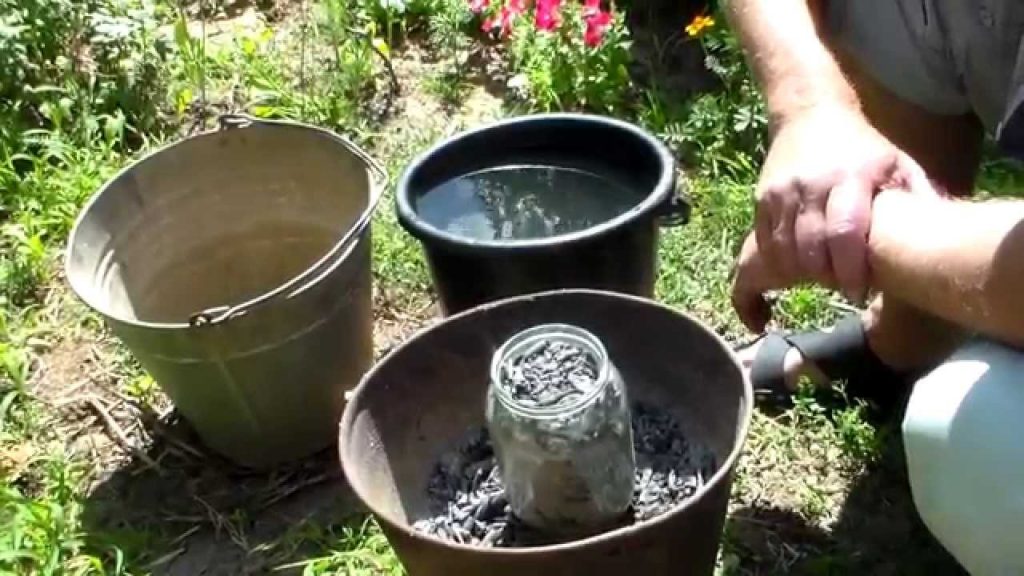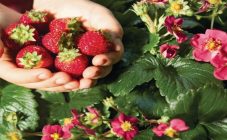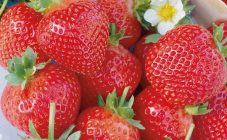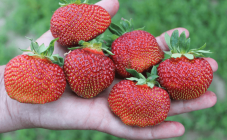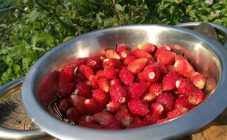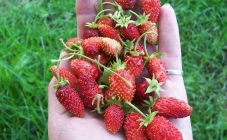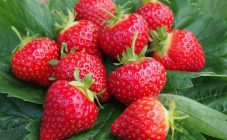Content:
Strawberries and garden strawberries are welcome guests on any garden plot; these berry crops are also grown on an industrial scale. The popularity of these plants is explained by the early ripening of fruits, high yield and excellent taste of berries.
Modern gardeners strive to get the maximum benefit from their summer cottages, so they are primarily interested in those strawberry varieties that are capable of producing high yields, and their berries should be distinguished by a good presentation and excellent taste. One of these varieties is the San Andreas strawberry.
Unfortunately, in Russia, gardeners know very little about this variety. Therefore, very few summer residents are engaged in growing it in garden plots. But the variety is promising for commercial breeding. This strawberry belongs to remontant by the type of fruiting, and the duration of daylight hours does not really matter for fruit ripening.
The main characteristics of the variety and the nuances of cultivation will be described below.
General information about culture
Breeders from a university located in California were engaged in the development of this variety at the beginning of this century. The varieties of the Albion line and subspecies Cal 97.86-1 were taken as a basis. The resulting hybrid is one of the best varieties of the famous Albion. San Andreas strawberry was certified in the United States and Canada in 2009, and is now actively distributed in many countries of the Old and New Worlds.
This strawberry was officially included in the State Register of Belarus in 2014 and is actively grown by local gardeners. In Russia and Ukraine there has not yet been an official registration of San Andreas strawberries. However, in many southern regions, as well as in the Volga region and even in the middle lane, they are trying to grow this strawberry in some private farms.
Gardeners note that this variety has good indicators of frost resistance - the bushes can withstand frosts down to -15-17 ° C, show good yields in open ground and in greenhouse conditions. Also, this berry culture is resistant to return spring frosts, tolerates short-term drought well, can grow and bear fruit well on any type of soil.
Characteristics and features of the variety
The description of the San Andreas strawberry variety should begin with a story about the ripening time of the berries. Since this variety is remontant, by the ripening period, the berries are classified as medium-early type. In open ground, the beginning of fruiting occurs in the last days of May and continues until the end of June. And in greenhouses, you can get the first harvest from the bushes of San Andreas in the second decade of April.
The bushes are medium in size, the foliage is light emerald in color, their shape is typical for strawberries. The root system is well developed, highly branched, strong. Therefore, the yield of San Andreas is higher than that of other varieties of garden strawberries.
Up to 10 peduncles appear on each bush during the budding period, the stems of which are at least 0.5 cm thick. Therefore, they are able to withstand the large weight of the berries without bending under their weight.
Another plus of this berry culture is that the planted bushes begin to bloom within a couple of months after planting in a permanent place. However, experts recommend removing the first buds to allow the plants to grow. In this case, at the next peak, the yield from the beds of garden strawberries San Andreas will be close to the declared one.
The cyclicity of fruiting peaks for this strawberry is every 1-1.5 months, and if the autumn in the region is warm, then it will be possible to harvest from the beds until the last decade of October - early November.
This strawberry does not tolerate too hot weather (above + 25 ° C). At high temperatures, flower stalks form less well, and pollen becomes sterile. Therefore, ovaries are not formed, or the fruits become non-standard. Berry crops grown in garden beds should be shaded in the heat using a special net, or tall plants should be grown nearby. Also, in hot weather, watering the beds with this strawberry should be often and abundantly.
If the natural conditions are favorable, then during the summer season, summer residents have time to collect up to 4 crops from a strawberry plantation. But it should be remembered that the harvest of large-fruited berries will be the first in the season, and at the next peaks of fruiting, the size of the berries will gradually decrease. At the same time, many note that the taste is better in the berries of the second harvest.
The characteristics of the yield of the San Andreas variety are as follows:
- the mass of berries of the first harvest can reach 30g, therefore, this strawberry is classified as a large-fruited variety;
- the yield per season from each bush reaches 1 kg.
Ripe fruits can have a conical or biconical shape and a bright red color with a characteristic luster. The seeds are slightly pressed into the flesh of the berries, the cups are slightly larger than the base of the fruits, the fruits are firmly attached to them, the separation is dry. The color of the dense juicy pulp is red with an orange tint. But the reviews of summer residents about the taste of berries are very contradictory: some evaluate the taste of San Andreas strawberries at 4.5 points on a five-point scale, while others believe that the fruit pulp of this variety is too coarse.
Since the pulp of the berries is quite dense, the harvested crop is universal - the fruits are eaten fresh, jams and jams are cooked, compotes are closed, and frozen for the winter. Also, this crop perfectly tolerates transportation over any distance, without losing its excellent presentation and taste.
The high immunity of the bushes of this strawberry is the reason that pathogenic microorganisms and pests practically do not affect it.
Agrotechnics
When choosing a place for a future strawberry plantation, you should remember about the rules of crop rotation. The best predecessors for her are marigolds, parsley, legumes, beets, carrots, garlic and mustard. And after tomatoes, eggplants, cucumbers, raspberries or cabbage, you cannot grow San Andreas garden strawberries.
The plot should be flat and sunny, without stagnation of moisture in the ground. The best soil on the site is black soil with a small addition of high-moor peat, which has a neutral or slightly acidic pH.
When planting bushes of San Andreas strawberries in the spring, a place for it is being prepared in the fall. And for autumn planting, the preparation of the site should be done in the spring. Before digging, 10 kg of any organic matter (humus, compost or rotted manure), ½ a bucket of wood ash are introduced for each m² of the area. When digging, it is necessary to remove the weed along with the roots.
25-30 days before planting strawberry bushes, 1 tbsp is introduced into the soil. l. potassium salt and 2 tbsp. l. superphosphate. The garden plot is dug up again, embedding fertilizers into the soil to a depth of 12-15 cm.
Bushes should be planted in cloudy weather or in the evening. Planting holes are dug at a distance of 0.4-0.5 m from each other, watering is carried out.After the moisture is completely absorbed, the seedlings are placed in the pits, spreading the roots along the diameter of the hole, buried so that the heart is 1-1.5 cm above the ground surface.After dropping the bush, the plantings are watered again.
Further care of strawberries consists in watering, applying top dressing, loosening row spacings and removing weeds. Water the strawberries as the top layer of the soil dries up. Freshly planted plants need to be watered daily, and after 7-10 days the number of waterings is reduced - the plants need to be watered no more than once every 2-3 days. In late spring and early summer, the watering regime is once a week. And in late summer and early autumn, it is enough to water the strawberries every 12-14 days.
Top dressing in the first season after planting strawberry bushes is not carried out - the plants have enough of those fertilizers that were applied when preparing the beds. In the next season, caring for this variety should begin with the removal of last year's dried foliage, and a solution of ammonium nitrate should be added to the soil.
This strawberry variety will be good overwintering. However, if a too cold winter is expected in the region, then it is better to cover the bushes with coniferous spruce branches, straw, peat before the onset of frost.
Advantages and disadvantages of the variety
The main advantages of San Andreas strawberries include:
- high productivity;
- even a decrease in daylight hours does not affect the ripening of the crop;
- beautiful presentation and good taste of ripe berries;
- perfectly tolerates transportation;
- fruiting begins within 60-65 days after planting.
This strawberry has practically no drawbacks. It can only be noted that the San Andreas bushes develop a small number of whiskers, so a rapid increase in the plantation will not work. Due to the high yield, the berries quickly shrink, so it is recommended to change the bushes every 4 years.
This variety of garden strawberries is considered very promising. Domestic gardeners definitely need to pay attention to it.
